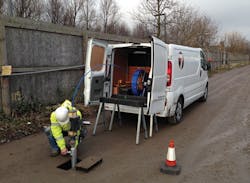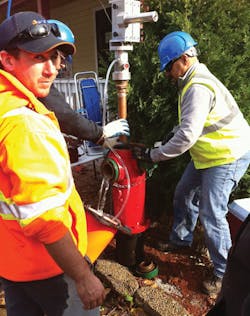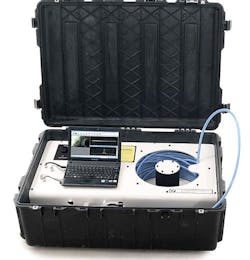| JD7's camera system can be operated in a live water main under full pressure. |
Advancements in technology for inspection and assessment now enable utilities to investigate pipe wall conditions, material validation, sediment issues, blockages, contamination and quality issues, and even predict life expectancy of the pipe. Addressing these issues can help answer the question, "Where in the world is our water going?"
Money Down the Drain
The International Energy Agency estimates that, on average, 34 percent of water pumped globally ends up as non-revenue water (NRW). Unauthorized consumption through theft, losses through metering inaccuracies, and real losses from water leaks and main breaks all contribute to non-revenue water.
Pipes have life cycles that can range anywhere from 15 to 100 years, depending on the pipe material and the environment. Therefore, pipe age alone is a poor indicator of the need for rehabilitation or replacement. Rather, it is important to use programs to evaluate the actual condition of infrastructure to ensure that investments are being prioritized in the right order. Regular condition assessment and inspection programs can help with this prioritization.
Pipeline assessment and inspection programs are a proactive approach to finding the best way to prioritize budgets for renewing systems and managing assets, while also considering the health and safety of workers and the public. Pipelines span for miles and are constantly at work delivering natural resources to homes and businesses across the globe. The consequences of not using the best technology to manage systems come with many repercussions, and ignoring the current state of utility pipelines is no longer an option.






